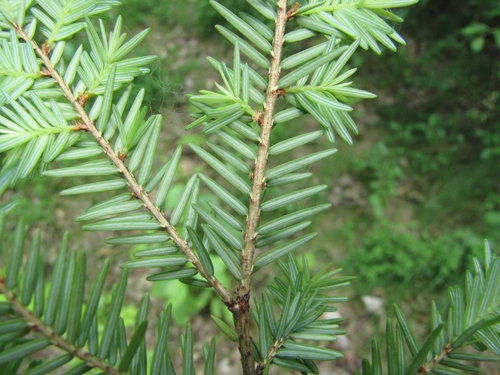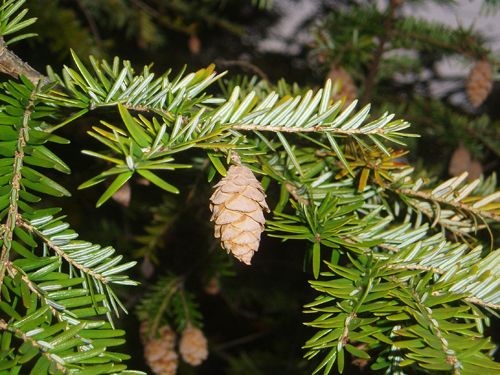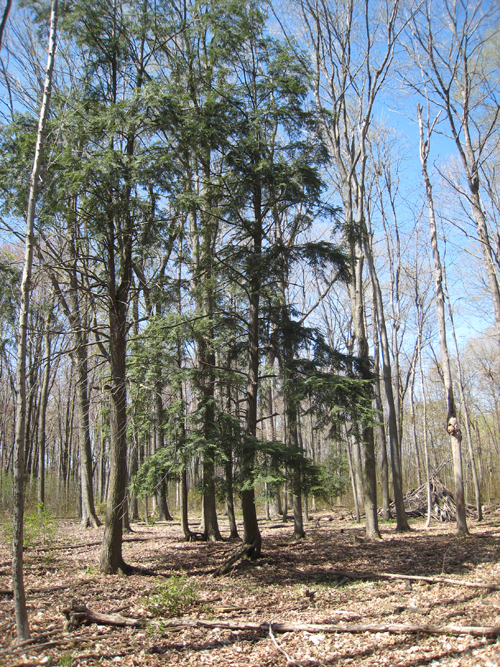eastern hemlock
About eastern hemlock \ Tsuga canadensis
Eastern hemlock is a common Southern Ontario conifer, but it is often confused with balsam fir, which has similar needles. Remember that eastern hemlock needles are attached to the twig with a small stem (instead of a disc) – just think hemlock – ‘stem’-lock! The oily seeds provide food for many bird species, and the dense branches provide cover for many species such as snowshoe hares, wild turkeys, and white-tailed deer. These conifers prefer cool, shady and moist sites, often found on lower slopes and in valleys.

The hemlock needles are attached spirally but twist into two flat rows. Note the small stem that attaches each needle to the twig! There are two white bands on the underside of the needles. Photo by Chris Earley.

The small cones are 1-2cm long on hairy stalks. Photo by Chris Earley.

These densely branched trees are conical when young, and become more irregular as they age. Photo by Brian Lacey.

Ontario Tree Atlas map of non-planted Eastern Hemlock. 1995-1999.
References
Farrar, J.L.. 1995. Trees in Canada. Fitzhenry & Whiteside Ltd. Toronto. ON. 504 pp.
Kershaw, L. 2001. Trees in Ontario: Including tall shrubs. Lone Pine Publishing. Edmonton. AB. 240 pp
Muma, W. 2011. Ontario Trees and Shrubs. [Online] Available: www.ontariotrees.com
OMNR, 2011. Ontario Ministry of Natural Resources: Ontario Tree Atlas. [Online] Available: http://www.mnr.gov.on.ca/en/Business/ClimateChange/2ColumnSubPage/267027.html
OMNR, 2008. Ontario’s Biodiversity: Species at Risk.